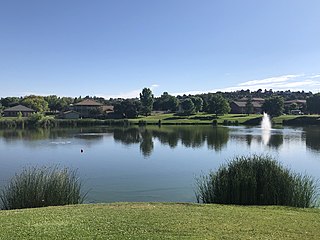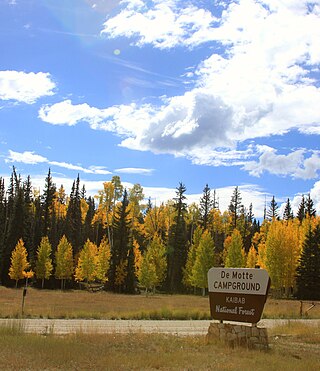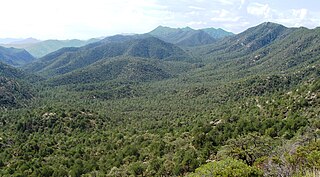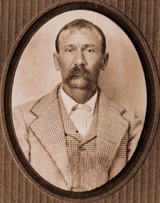Related Research Articles

The Arizona Complex League (ACL) is a rookie-level Minor League Baseball league that operates in and around Phoenix, Arizona, since 1988. Prior to 2021, it was known as the Arizona League (AZL). Along with the Florida Complex League (FCL), it forms the lowest rung on the North American minor-league ladder.

The Florida Complex League (FCL) is a rookie-level Minor League Baseball league that operates in Florida, United States. Before 2021, it was known as the Gulf Coast League (GCL). Together with the Arizona Complex League (ACL), it forms the lowest rung on the North American minor-league ladder.

Payson is a town in northern Gila County, Arizona, United States. Due to Payson's location being very near to the geographic center of Arizona, it has been called "The Heart of Arizona". The town is surrounded by the Tonto National Forest, the largest of the six national forests in Arizona and the ninth largest national forest in the United States.

The Arizona Territory, colloquially referred to as Confederate Arizona, was an organized incorporated territory of the Confederate States of America that existed from August 1, 1861, to May 26, 1865, when the Confederate States Army Trans-Mississippi Department, commanded by General Edmund Kirby Smith, surrendered at Shreveport, Louisiana. However, after the Battle of Glorieta Pass, the Confederates had to retreat from the territory, and by July 1862, effective Confederate control of the territory had ended. Delegates to the secession convention had voted in March 1861 to secede from the New Mexico Territory and the Union, and seek to join the Confederacy. It consisted of the portion of the New Mexico Territory south of the 34th parallel, including parts of the modern states of New Mexico and Arizona. The capital was Mesilla, along the southern border. The breakaway region overlapped Arizona Territory, established by the Union government in February 1863.

The Arizona Rangers are a non-commissioned civilian auxiliary that supports law enforcement in the state of Arizona.

Kaibab National Forest borders both the north and south rims of the Grand Canyon, in north-central Arizona. Its 1.6 million acres is divided into three sections: the North Kaibab Ranger District, the Tusayan Ranger District, and the Williams Ranger District. It is managed by the United States Forest Service. Grand Canyon National Park separates the North Kaibab and the South Kaibab. The South Kaibab covers less than 1,422 square miles (3,680 km2) and the North Kaibab stretches over 1,010 square miles (2,600 km2). Elevations vary on the forest from 5,500 feet in the southwest corner to 10,418 feet at the summit of Kendrick Peak on the Williams Ranger District. The forest as a whole is headquartered in Williams.

The Coronado National Forest is a United States National Forest that includes an area of about 1.78 million acres (7,200 km2) spread throughout mountain ranges in southeastern Arizona and southwestern New Mexico.

Surprise Stadium is a baseball venue located at the Surprise Recreation Campus athletic facility in Surprise, Arizona, United States. The stadium opened in 2002 and seats 10,714 people. It is the spring training facility for the Kansas City Royals and the Texas Rangers. It is also the home of the Arizona Fall League's Surprise Saguaros. The venue was previously the home of the Golden Baseball League's Surprise Fightin' Falcons, which disbanded after their only season in 2005. Surprise Stadium is owned and managed by the City of Surprise Sports and Tourism Department.

The Coconino National Forest is a 1.856-million acre United States National Forest located in northern Arizona in the vicinity of Flagstaff, with elevations ranging from 2,600 feet to the highest point in Arizona at 12,633 feet. Originally established in 1898 as the "San Francisco Mountains National Forest Reserve", the area was designated a U.S. National Forest by Pres. Theodore Roosevelt on July 2, 1908, when the San Francisco Mountains National Forest Reserve was merged with lands from other surrounding forest reserves to create the Coconino National Forest. Today, the Coconino National Forest contains diverse landscapes, including deserts, ponderosa pine forests, flatlands, mesas, alpine tundra, and ancient volcanic peaks. The forest surrounds the towns of Sedona and Flagstaff and borders four other national forests; the Kaibab National Forest to the west and northwest, the Prescott National Forest to the southwest, the Tonto National Forest to the south, and the Apache-Sitgreaves National Forest to the southeast. The forest contains all or parts of nine designated wilderness areas, including the Kachina Peaks Wilderness, which includes the summit of the San Francisco Peaks. The headquarters are in Flagstaff. The Coconino National Forest consists of three districts: Flagstaff Ranger District, Mogollon Rim Ranger District, and Red Rock Ranger District, which have local ranger district offices in Flagstaff, Happy Jack, and Sedona.

The Arizona Complex League Rangers are a Rookie-level affiliate of the Texas Rangers, competing in the Arizona Complex League of Minor League Baseball. The team plays its home games at Surprise Stadium in Surprise, Arizona. The team is composed mainly of players who are in their first year of professional baseball either as draftees or non-drafted free agents.

Harry Cornwall Wheeler was an Arizona lawman who was the third captain of the Arizona Rangers, as well as the sheriff of Cochise County, serving from 1912 into 1918. He is known as the lead figure in the illegal mass kidnapping and deportation of some 1200 miners and family members, many of them immigrants, from Bisbee, Arizona to New Mexico in 1917. Beginning on July 12, 1917, he took total control of the town of Bisbee, controlling access and running kangaroo courts that deported numerous people.
Below are select minor league players and the rosters of the minor league affiliates of the Texas Rangers:
Jeff Kidder was an American lawman in the closing days of the American Old West. He was most noted for his service with the Arizona Rangers.

Sunflower is a region of Maricopa County, Arizona, United States adjacent to the Mazatzal Wilderness, west of Tonto National Forest and northwest of Roosevelt Reservoir. Formerly a mercury-mining district, Sunflower is now a destination for hikers, campers and off-road vehicle tours. Sunflower is located near Arizona State Route 87, 22.8 miles (36.7 km) northeast of Fountain Hills. Route 87 near Sunflower is called the Beeline Highway.

The Battleground Gunfight, also known as the Battleground Shootout, was a gunfight between a posse of American lawmen and the Smith Gang. It was fought on October 8, 1901, within Arizona Territory's Fort Apache Indian Reservation, at a clearing in the forest known today as the "Battleground". Nine Arizona Rangers and deputies caught up with the cattle rustler Bill Smith and his gang. During a long exchange of gunfire that followed, Ranger Carlos Tafolla and Deputy Bill Maxwell were killed and one or two of the outlaws may have been wounded. In the end, the Smith Gang escaped the posse and fled into Mexico.

Arizona Raiders is a 1965 American Techniscope Western film directed by William Witney and starring Audie Murphy.

The 2016–17 New York Rangers season was the franchise's 90th season of play and their 91st season overall. The team began its regular games on October 13, 2016, against the New York Islanders.

The 2018 NHL entry draft was the 56th NHL entry draft. The draft was held on June 22–23, 2018, at the American Airlines Center in Dallas, Texas.

Bill Downing a.k.a. William F. Downing was a notorious outlaw during the Wild West era in Arizona. Downing had fled from the Texas Rangers posse who was after him when he came to Arizona. In Arizona, he was involved in the killing of William S. “Slim” Traynor and in various train robberies including the robbery of the Train Depot in the town of Cochise. Downing was so unpopular that even members of his gang couldn't stand him.
References
- ↑ DeSoucy, M. David; Trimble, Marshall (2008). Arizona Rangers. Arcadia Publishing. p. 19. ISBN 9780738548319 – via Google Books.